ART NEWS:Jan.02
 Kang Hee Kim in “Dreamer” presents a series of photographs that collage street scenes from New York with landscapes and details from locations that Kim has visited throughout the country. Using mundane encounters from her everyday errands in New York as her starting point, Kim manipulates her photographs to construct images that convey a kind of surreal escapism, one that is free from the limits or restraints of reality. Due to the restriction of her VISA status, Kim has been unable to leave the United States—meaning she has not returned to her home country of South Korea for over ten years. Instead, she builds photographs to create new spaces and fictional experiences that allow for a sense of liberation and infinite possibility. It’s in the seemingly impossible merging of two or more environments that she finds their spark. Kim thinks of these photographs as paintings, where slight imperfections from the post-production process act as an equivalent to mark-making. She believes that small imperfections are human; they are what makes people attractive. Info: Benrubi Gallery, 521 West 26th Street, 2nd Floor, New York, Duration: 9/1-7/3/20, Days & Hours: Tue-Sat 10:00-18:00, https://benrubigallery.com
Kang Hee Kim in “Dreamer” presents a series of photographs that collage street scenes from New York with landscapes and details from locations that Kim has visited throughout the country. Using mundane encounters from her everyday errands in New York as her starting point, Kim manipulates her photographs to construct images that convey a kind of surreal escapism, one that is free from the limits or restraints of reality. Due to the restriction of her VISA status, Kim has been unable to leave the United States—meaning she has not returned to her home country of South Korea for over ten years. Instead, she builds photographs to create new spaces and fictional experiences that allow for a sense of liberation and infinite possibility. It’s in the seemingly impossible merging of two or more environments that she finds their spark. Kim thinks of these photographs as paintings, where slight imperfections from the post-production process act as an equivalent to mark-making. She believes that small imperfections are human; they are what makes people attractive. Info: Benrubi Gallery, 521 West 26th Street, 2nd Floor, New York, Duration: 9/1-7/3/20, Days & Hours: Tue-Sat 10:00-18:00, https://benrubigallery.com
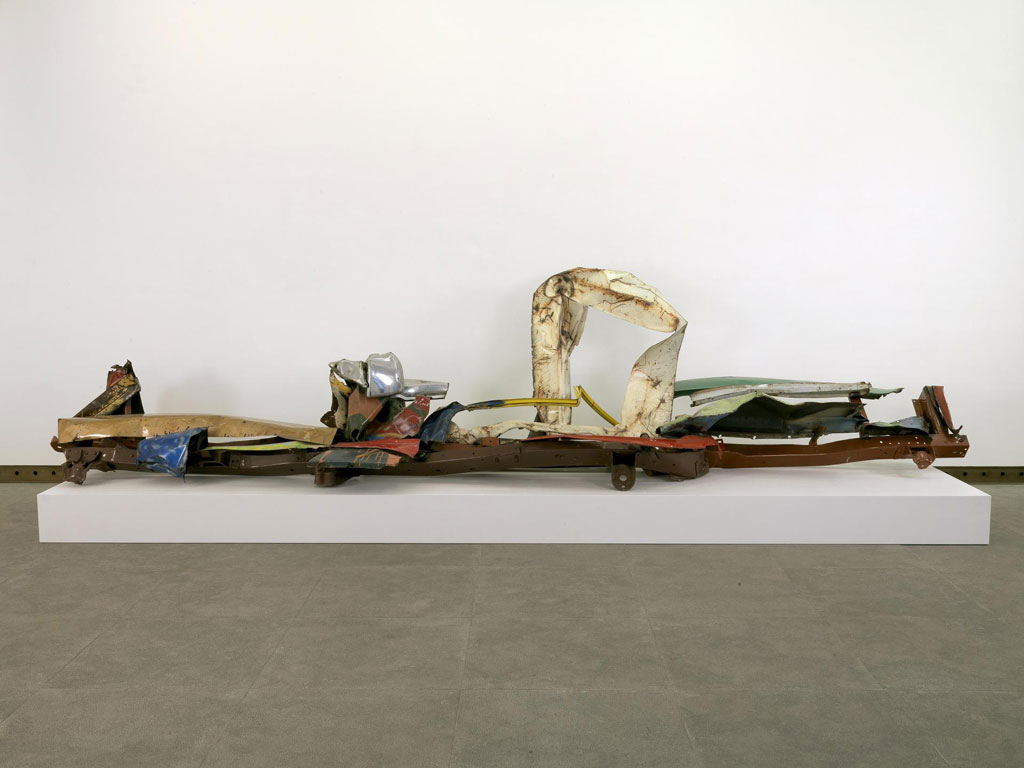 John Chamberlain in his exhibition “Chamberlain in Paris” presents a selection of works created from the mid-1960s to the early 90s, These multifaceted creations appear to converse with one another through the various media that the artist chose and experimented with on an on-going basis: there are sculptures, which brought him great fame in the early 1960s, but also collage, monotyping, and photography. An avant-garde artist, Chamberlain said that it was thanks to poets like Robert Creeley, Robert Duncan, and especially his teacher Charles Olson at Black Mountain College, that he learned to “see words”, to manoeuvre and extract them and then to reassemble them into a sort of collage. He approached sculpting according to the same associative principles, juxtaposing heteroclite fragments of objects. He used old abandoned car carcasses; plentiful indeed in the 1950s backcountry backyards of the USA and collected from it scrap metal that he would interlock, crumple up, undo, fold and straighten until he reached a sculptural piece. This sort of expressiveness should be considered in the context of what artists were experiencing during the post-war era in the United States – meaning the intense relationship between the materials and how they were being transformed was key. By compression or extension, movement is omnipresent in his sculptures as well as in his photographic approach. Info Galerie Karsten Greve, 5, rue Debelleyme, Paris, Duration: 18/1-18/3/20, Days & Hours: Tue-Sat 10:00-19:00, https://galerie-karsten-greve.com
John Chamberlain in his exhibition “Chamberlain in Paris” presents a selection of works created from the mid-1960s to the early 90s, These multifaceted creations appear to converse with one another through the various media that the artist chose and experimented with on an on-going basis: there are sculptures, which brought him great fame in the early 1960s, but also collage, monotyping, and photography. An avant-garde artist, Chamberlain said that it was thanks to poets like Robert Creeley, Robert Duncan, and especially his teacher Charles Olson at Black Mountain College, that he learned to “see words”, to manoeuvre and extract them and then to reassemble them into a sort of collage. He approached sculpting according to the same associative principles, juxtaposing heteroclite fragments of objects. He used old abandoned car carcasses; plentiful indeed in the 1950s backcountry backyards of the USA and collected from it scrap metal that he would interlock, crumple up, undo, fold and straighten until he reached a sculptural piece. This sort of expressiveness should be considered in the context of what artists were experiencing during the post-war era in the United States – meaning the intense relationship between the materials and how they were being transformed was key. By compression or extension, movement is omnipresent in his sculptures as well as in his photographic approach. Info Galerie Karsten Greve, 5, rue Debelleyme, Paris, Duration: 18/1-18/3/20, Days & Hours: Tue-Sat 10:00-19:00, https://galerie-karsten-greve.com
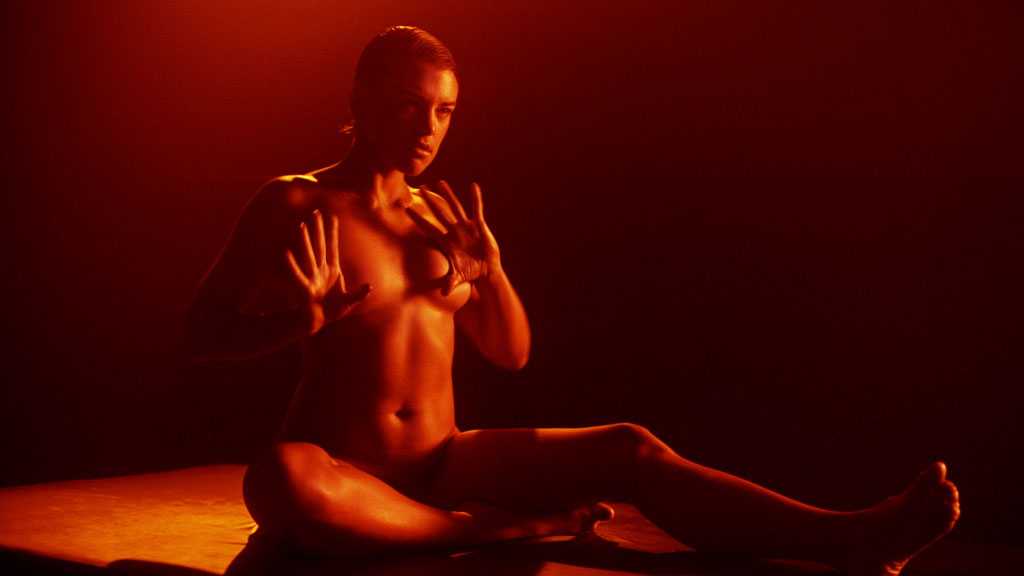 The goal of Michael Portnoy’s new multi-channel video installation “Progressive Touch: Series 1” (2019), as the artist puts it, is to “improve” the rhythm of togetherness. Exploring and expanding the relationship between human sexuality, choreography, and musical composition, he aims to combat the apparent simplification of rhythm in human movements and gestures. This can be observed in the industrialization of labor or the history of contemporary dance, where the relation to rhythm has been either severed or reduced to allusions to pop culture. This situation can also be noticed in the predictable cadences and movements of sexual intimacy, long since exploited, commercialized, sensationalized, or desensitized. Portnoy proposes complicating this all-too-predictable condition by introducing the complex meter and compositional structures found in progressive rock and math metal to the sexual act. A group of actors performs modified steps in the sexual encounter in slapstick vignettes. Together they make up a composition resembling a rock opera and also provide an example to be tried out at home. Info: Vleeshal Markt, Markt 1, Middelburg, The Netherlands, Duration: 19/1-15/3/20, Days & Hours: Wed-Fri 13:00-17:00, Sat-Sun 11:00-17:00, https://vleeshal.nl
The goal of Michael Portnoy’s new multi-channel video installation “Progressive Touch: Series 1” (2019), as the artist puts it, is to “improve” the rhythm of togetherness. Exploring and expanding the relationship between human sexuality, choreography, and musical composition, he aims to combat the apparent simplification of rhythm in human movements and gestures. This can be observed in the industrialization of labor or the history of contemporary dance, where the relation to rhythm has been either severed or reduced to allusions to pop culture. This situation can also be noticed in the predictable cadences and movements of sexual intimacy, long since exploited, commercialized, sensationalized, or desensitized. Portnoy proposes complicating this all-too-predictable condition by introducing the complex meter and compositional structures found in progressive rock and math metal to the sexual act. A group of actors performs modified steps in the sexual encounter in slapstick vignettes. Together they make up a composition resembling a rock opera and also provide an example to be tried out at home. Info: Vleeshal Markt, Markt 1, Middelburg, The Netherlands, Duration: 19/1-15/3/20, Days & Hours: Wed-Fri 13:00-17:00, Sat-Sun 11:00-17:00, https://vleeshal.nl
 Tony Lewis’ practice focuses on the convergence of semiotics, abstraction and drawing: graphite pencil and paper are the mediums the artist uses to trace and create linguistic narratives and reflections on gestural expression. For the exhibition “The Dangers (As Far As I Can See)”, the artist is presenting a new body of work that is composed of a series of drawings, seemingly simple abstractions, which conceal intricate narratives, based on a nine-year examination of William F. Buckley Jr.’s argument from his famous 1965 debate with James Baldwin. The large-scale works showcased are the trace of the evolution of Tony Lewis’ investigation on abstraction as well as figuration as a means of communication. Prompted by the words of James Baldwin stated above, Lewis performs the notion of “turning away from” by actively challenging his natural impulse, and listening to Buckley’s language, thesis, and rhetorical strategies. Lastly, the large graphite on paper sculptures the artist refers to as “floor drawings” have been activated throughout the exhibition to perform the act of listening to Buckley’s argument, as well as embody the discomfort and inevitable distortion of a physical body after years of listening. Info: Massimo De Carlo Gallery, Piazza Belgioioso 2, Milan, Duration: 22/1-28/3/20, Days & Hours: Tue-Sat 11:00-19:00, www.massimodecarlo.com
Tony Lewis’ practice focuses on the convergence of semiotics, abstraction and drawing: graphite pencil and paper are the mediums the artist uses to trace and create linguistic narratives and reflections on gestural expression. For the exhibition “The Dangers (As Far As I Can See)”, the artist is presenting a new body of work that is composed of a series of drawings, seemingly simple abstractions, which conceal intricate narratives, based on a nine-year examination of William F. Buckley Jr.’s argument from his famous 1965 debate with James Baldwin. The large-scale works showcased are the trace of the evolution of Tony Lewis’ investigation on abstraction as well as figuration as a means of communication. Prompted by the words of James Baldwin stated above, Lewis performs the notion of “turning away from” by actively challenging his natural impulse, and listening to Buckley’s language, thesis, and rhetorical strategies. Lastly, the large graphite on paper sculptures the artist refers to as “floor drawings” have been activated throughout the exhibition to perform the act of listening to Buckley’s argument, as well as embody the discomfort and inevitable distortion of a physical body after years of listening. Info: Massimo De Carlo Gallery, Piazza Belgioioso 2, Milan, Duration: 22/1-28/3/20, Days & Hours: Tue-Sat 11:00-19:00, www.massimodecarlo.com
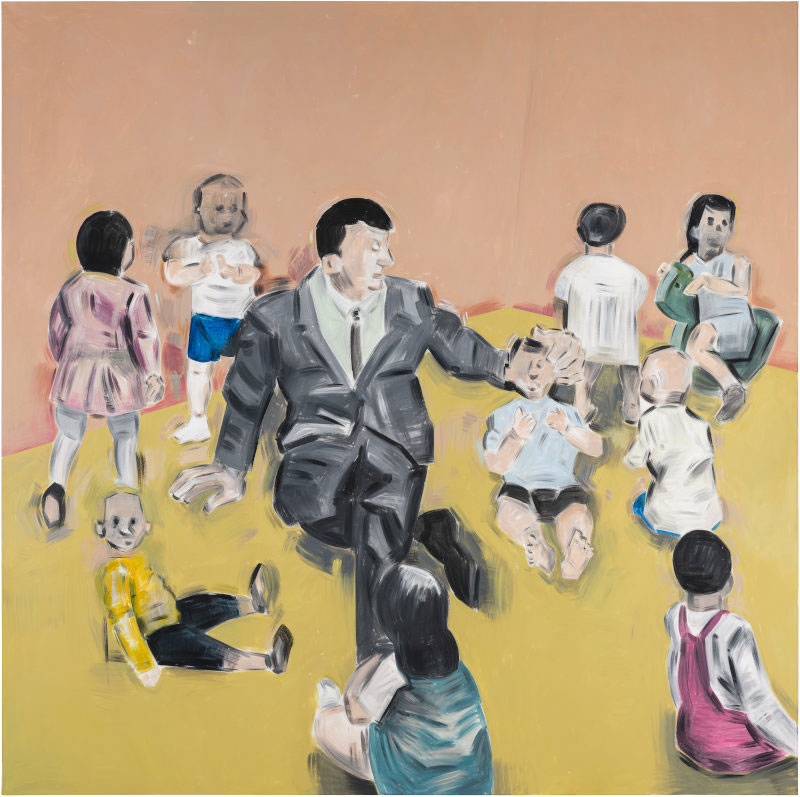 One of the main projects of ART CITY Bologna 2020, that aims at inquiring into the theme of loop, repetition and cyclicity in the present time, by looking at things from different perspectives, through the works of artists who have made this issue the focus of their research. The exhibition project “AGAINandAGAINandAGAINand”, develops through different approaches: a sociological one, which looks into the impact of new technologies and organizational systems on the psychological and physical systems of humans; a philosophical and religious one, which draws inspiration from forms of knowledge and experience based on holism, reincarnation, and a cyclical conception of time; and an ecological one, which propounds new models of production and consumption based on a new awareness of rural culture. The participating artists come from different parts of the world, and the fact that they problematize the issue shows that there is a critical debate around time, and the forms of knowledge and power arising from it, in contemporary art. Info: Curator: Lorenzo Balbi, Assistant Curator: Sabrina Samorì, MAMbo – Museo d’Arte Moderna di Bologna, Via Don Minzoni 14, Bologna, Duration: 23/1-3/5/20, Days & Hours: Tue-Wed & Fri-sun 10:00-18:30, Thu 10:00-22:00, www.mambo-bologna.org
One of the main projects of ART CITY Bologna 2020, that aims at inquiring into the theme of loop, repetition and cyclicity in the present time, by looking at things from different perspectives, through the works of artists who have made this issue the focus of their research. The exhibition project “AGAINandAGAINandAGAINand”, develops through different approaches: a sociological one, which looks into the impact of new technologies and organizational systems on the psychological and physical systems of humans; a philosophical and religious one, which draws inspiration from forms of knowledge and experience based on holism, reincarnation, and a cyclical conception of time; and an ecological one, which propounds new models of production and consumption based on a new awareness of rural culture. The participating artists come from different parts of the world, and the fact that they problematize the issue shows that there is a critical debate around time, and the forms of knowledge and power arising from it, in contemporary art. Info: Curator: Lorenzo Balbi, Assistant Curator: Sabrina Samorì, MAMbo – Museo d’Arte Moderna di Bologna, Via Don Minzoni 14, Bologna, Duration: 23/1-3/5/20, Days & Hours: Tue-Wed & Fri-sun 10:00-18:30, Thu 10:00-22:00, www.mambo-bologna.org
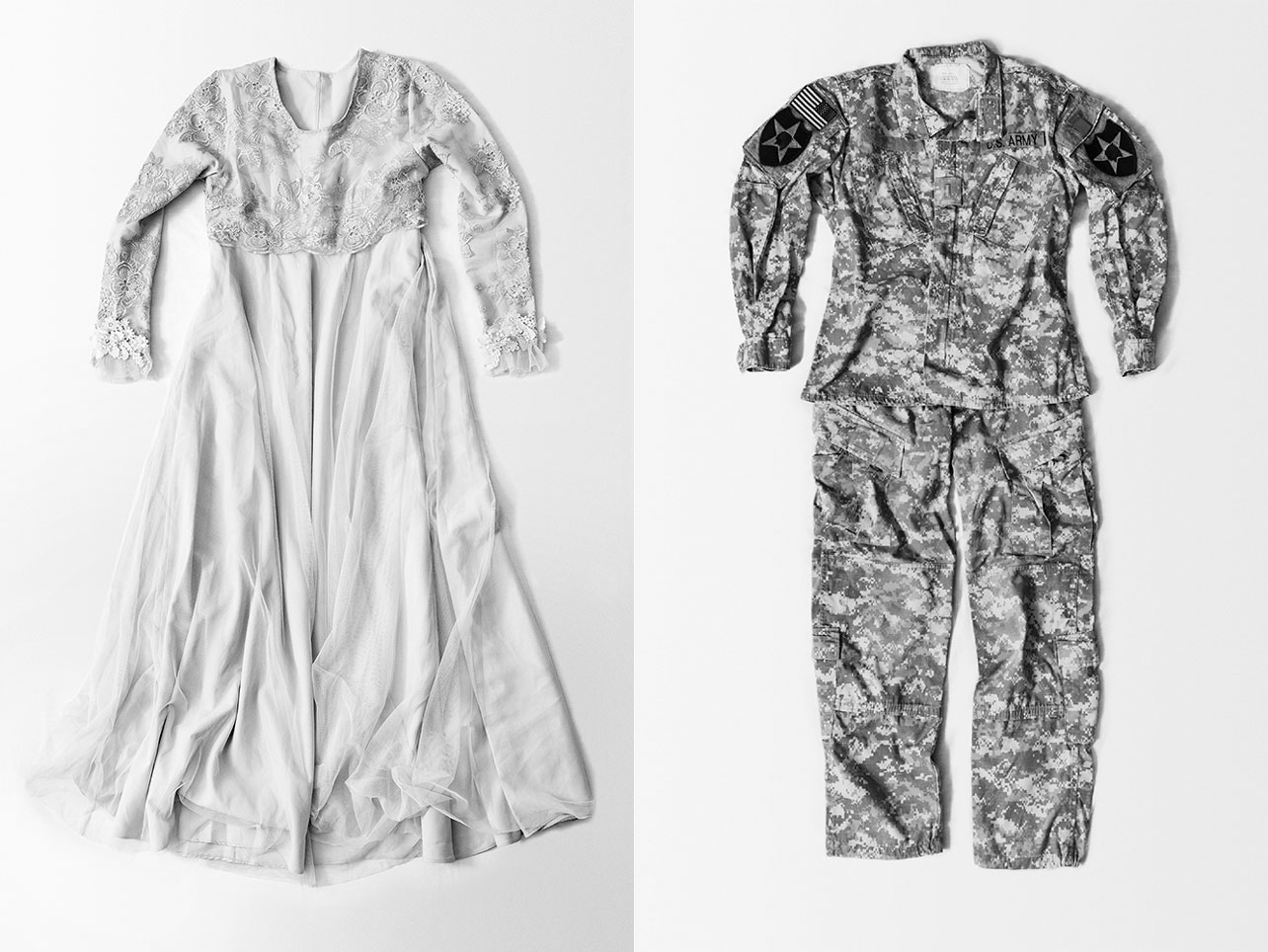 Laia Abril’s exhibition “On Rape“ is the second chapter to her project “A History of Misogyny” that expands her ongoing visual archive of the systemic control of women’s bodies across time and cultures. By scrutinizing, conceptualizing and visualizing diverse miscarriages of justice across historical regulations, toxic dynamics and victims’ testimonies, the project aims to call out the institutional rape culture prevalent in societies around de world. Laia Abril is looking at rape by exploring how concepts of myths, power, and law, relate to the constructions of the notion of masculinity and sexual violence. The artist has been triggered by a local news that impressed her deeply. In 2018 the Spanish Court set free 5 man who gang-raped a 18-year-old with a sentence of abuse instead of rape, that would eventually call into question the Spanish legislative on rape. By looking back to history, Laia Abril could identify gender-based stereotypes and myths, prejudices and misconceptions, that have prevailed and perpetuated the rape culture. Through a painstaking research on miscarriages of justice and victim-blaming attitudes, this work evokes how still today society blames victims of sexual assault and normalizes sexual violence. Info: Les filles du Calvaire, 17 rue des Filles-du-Calvaire, Paris Duration: 25/1-22/2/20, Days & Hours: Tue-Sat 11:00-18:30, www.fillesducalvaire.com
Laia Abril’s exhibition “On Rape“ is the second chapter to her project “A History of Misogyny” that expands her ongoing visual archive of the systemic control of women’s bodies across time and cultures. By scrutinizing, conceptualizing and visualizing diverse miscarriages of justice across historical regulations, toxic dynamics and victims’ testimonies, the project aims to call out the institutional rape culture prevalent in societies around de world. Laia Abril is looking at rape by exploring how concepts of myths, power, and law, relate to the constructions of the notion of masculinity and sexual violence. The artist has been triggered by a local news that impressed her deeply. In 2018 the Spanish Court set free 5 man who gang-raped a 18-year-old with a sentence of abuse instead of rape, that would eventually call into question the Spanish legislative on rape. By looking back to history, Laia Abril could identify gender-based stereotypes and myths, prejudices and misconceptions, that have prevailed and perpetuated the rape culture. Through a painstaking research on miscarriages of justice and victim-blaming attitudes, this work evokes how still today society blames victims of sexual assault and normalizes sexual violence. Info: Les filles du Calvaire, 17 rue des Filles-du-Calvaire, Paris Duration: 25/1-22/2/20, Days & Hours: Tue-Sat 11:00-18:30, www.fillesducalvaire.com
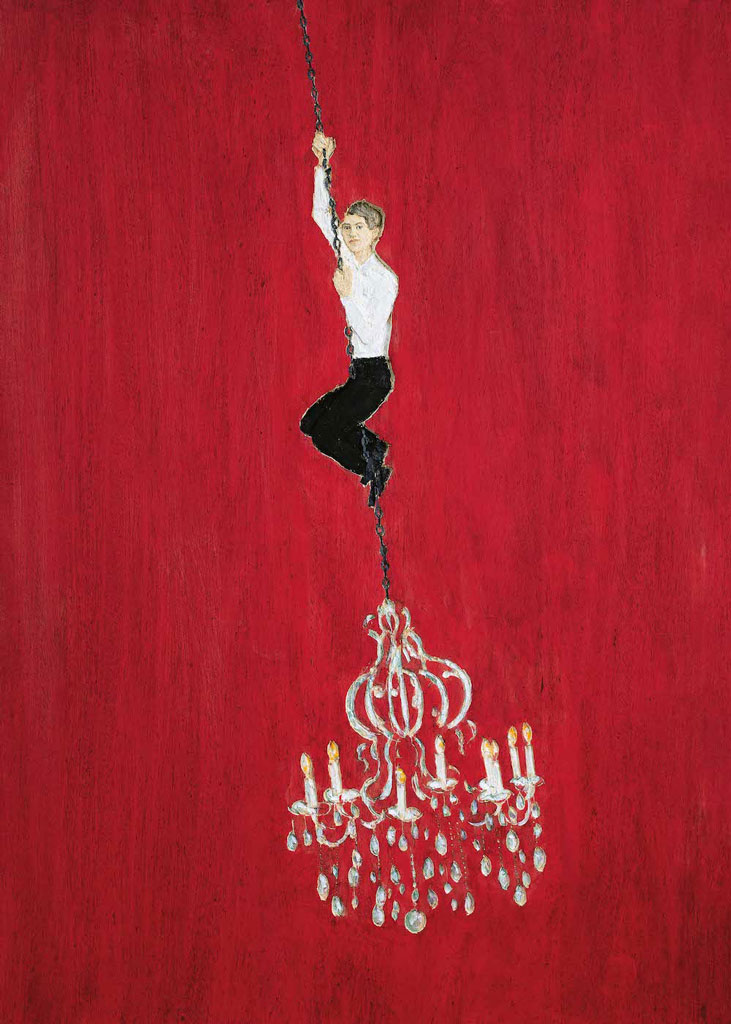 Stephan Balkenhol in his solo exhibition “DA CAPO”, presents a new series of works in which the artist explores subjects such as courage, strength and hubris, which are inherent in the often ambivalent process of renewal. Balkenhol has been creating statuary wooden sculptures for more than three decades, hewing them directly out of the wood with hammer and chisel. Despite the prevalent abstract trends in sculpture, during his studies under Ulrich Rückriem at the Hamburg Academy of Fine Arts, he had already decided to work figuratively. Against the background of conceptual strictness and the minimalism of his teacher’s works, this was the exception. In Balkenhol’s works, the traces left by the chisel remain visible, and the regular wooden block from which the sculpture emerges remains as a pedestal or residue for the viewer. The actual cube at the bottom is inseparable from the figure emerging from it, and thus appears to continue around it. The archaic, expressive treatment of the material coincides with the representation of human, animal or fabulous beings executed larger or smaller than life. Info: Galerie Thaddaeus Ropac, Villa Kast, Mirabellplatz 2, Salzburg, Duration: 25/1-28/3/20, Days & Hours: Tue-Fri 10;00-18:00, Sat 10:00-14:00, www.ropac.net
Stephan Balkenhol in his solo exhibition “DA CAPO”, presents a new series of works in which the artist explores subjects such as courage, strength and hubris, which are inherent in the often ambivalent process of renewal. Balkenhol has been creating statuary wooden sculptures for more than three decades, hewing them directly out of the wood with hammer and chisel. Despite the prevalent abstract trends in sculpture, during his studies under Ulrich Rückriem at the Hamburg Academy of Fine Arts, he had already decided to work figuratively. Against the background of conceptual strictness and the minimalism of his teacher’s works, this was the exception. In Balkenhol’s works, the traces left by the chisel remain visible, and the regular wooden block from which the sculpture emerges remains as a pedestal or residue for the viewer. The actual cube at the bottom is inseparable from the figure emerging from it, and thus appears to continue around it. The archaic, expressive treatment of the material coincides with the representation of human, animal or fabulous beings executed larger or smaller than life. Info: Galerie Thaddaeus Ropac, Villa Kast, Mirabellplatz 2, Salzburg, Duration: 25/1-28/3/20, Days & Hours: Tue-Fri 10;00-18:00, Sat 10:00-14:00, www.ropac.net
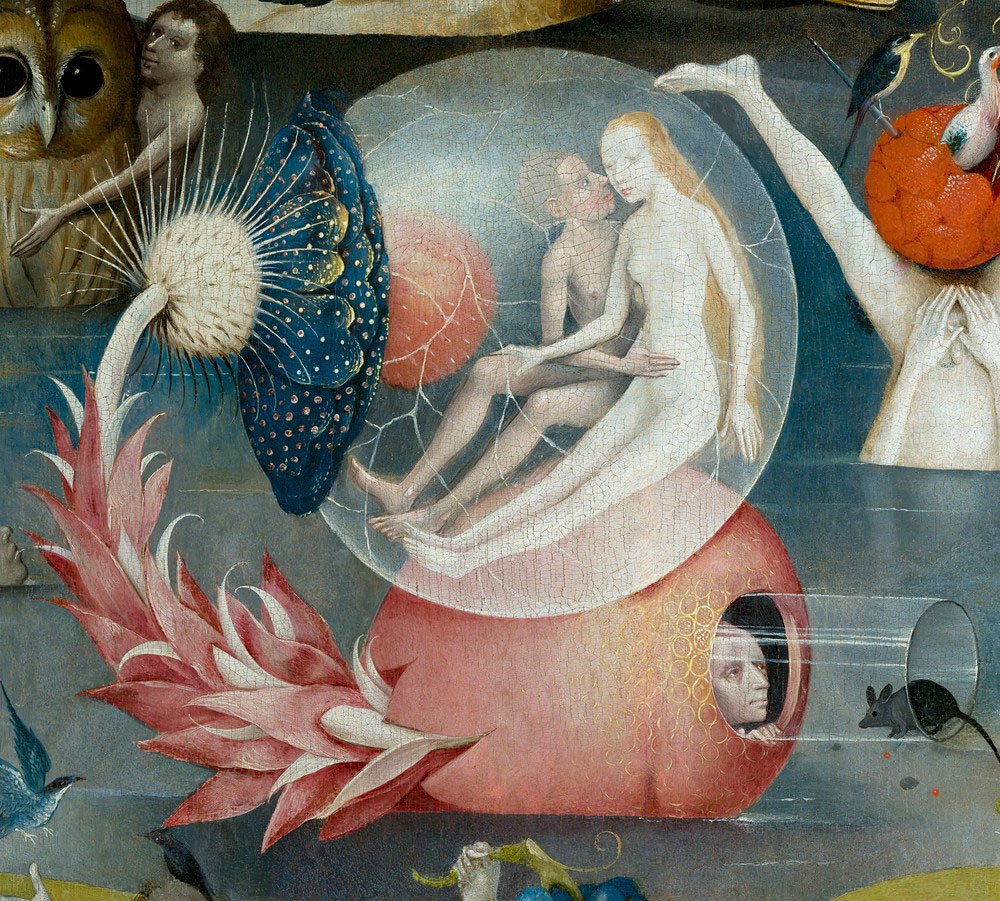 To start the new year with some reflexions on an ideal world, Galerie Chantal Crousel presents “Scènes dans une bulle de cristal”, an exhibition that invites the visitor to explore works offering some suggestions on how to transcend the universe we are part of. Introducing new dimensions to the visitor, an environment predicting paths of hurricanes (Haegue Yang), a contemplative sound installation (Tomoko Sauvage), an ancient rosewater distillery by Rirkrit Tiravanija, and the transcendental globes (Melik Ohanian). These works will stage parallel and converging universes. Abraham Cruzvillegas, David Douard and Liliane Lijn’s works encourage us to think outside the box, to reflect on reality and explore it. José María Sicilia, Anri Sala, Jean-Luc Moulène and Willem de Rooij bend the usually discouraging rules and provides them with new lives. Illusion is part of the path leading to free one’s mind. Mona Hatoum and Hassan Khan’s sculptures present a cristallisation of the instant, perfect and vulnerable. In The crystalist manifesto signed by painter Kamala Ibrahim Ishag, perception of time and space must remain unbounded. Info: Galerie Chantal Crousell, 10 rue Charlot, Paris, Duration: 25/1-29/2/20, Days & Hours: Tue-Sat 11:00-19:00, www.crousel.com
To start the new year with some reflexions on an ideal world, Galerie Chantal Crousel presents “Scènes dans une bulle de cristal”, an exhibition that invites the visitor to explore works offering some suggestions on how to transcend the universe we are part of. Introducing new dimensions to the visitor, an environment predicting paths of hurricanes (Haegue Yang), a contemplative sound installation (Tomoko Sauvage), an ancient rosewater distillery by Rirkrit Tiravanija, and the transcendental globes (Melik Ohanian). These works will stage parallel and converging universes. Abraham Cruzvillegas, David Douard and Liliane Lijn’s works encourage us to think outside the box, to reflect on reality and explore it. José María Sicilia, Anri Sala, Jean-Luc Moulène and Willem de Rooij bend the usually discouraging rules and provides them with new lives. Illusion is part of the path leading to free one’s mind. Mona Hatoum and Hassan Khan’s sculptures present a cristallisation of the instant, perfect and vulnerable. In The crystalist manifesto signed by painter Kamala Ibrahim Ishag, perception of time and space must remain unbounded. Info: Galerie Chantal Crousell, 10 rue Charlot, Paris, Duration: 25/1-29/2/20, Days & Hours: Tue-Sat 11:00-19:00, www.crousel.com
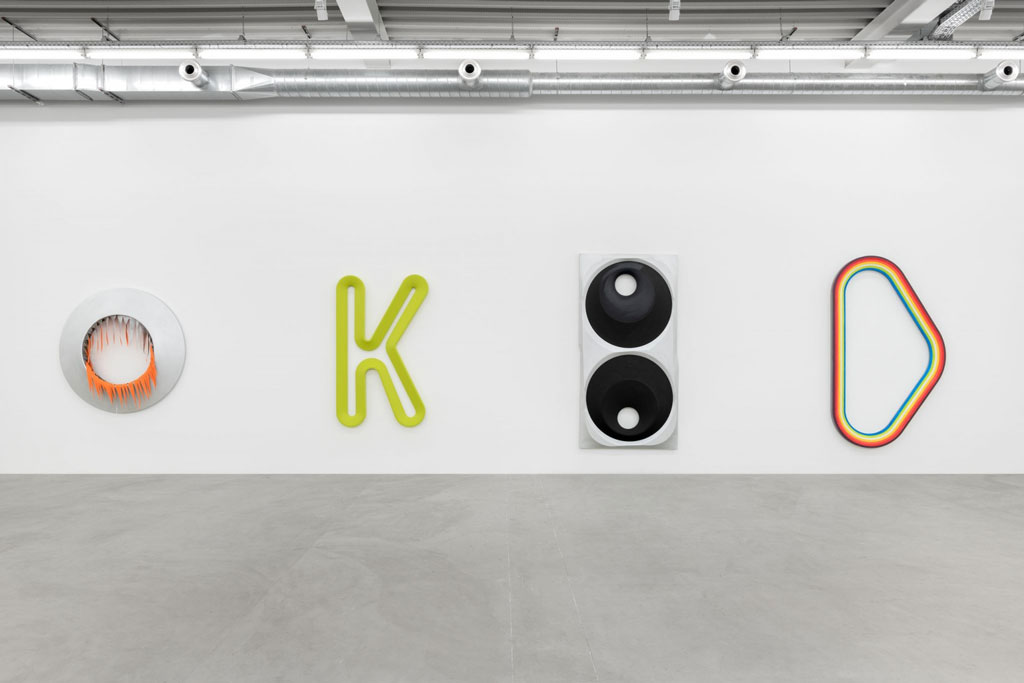 John Miller has been exploring notions of identity, economics, and social class throughout his forty-year practice. His latest exhibition “The Collapse of Neoliberalism” concerns, among other things, a sense of everyday malaise and life’s petty annoyances. It features a series of large-format photographs, two installations, and a video work. Mannequins are an iconic theme in this show. Miller characterizes them as simple anthropomorphized clothing racks that can nonetheless prompt unnerving degrees of identification. Miller’s current photographs, installations, consumers and videos insert these figures into familiar, even normalizing, scenarios that underscore their function as objects of desire onto which we, as both spectators and, project a miasma of fleeting trends and fashions. The installation “Project for a Revolution in New York” is a schematic mannequin rock band seemingly locked in a state of detached contemplation. This deadpan ensemble suggests that what was once a counterculture has devolved into a mode of marketing. Another installation, Epic Theater, restages the kind of photo-shoot Miller used to produce the pictures in this show. Here, the lights and props are real, but the backdrop paper and the stands that support it are merely images printed onto a wallpaper mural. Info: Metro Pictures, 519 West 24th Street, New York, Duration: 30/1-14/3/20, Days & Hours: Tue-Sat 10:00-18:00, www.metropictures.com
John Miller has been exploring notions of identity, economics, and social class throughout his forty-year practice. His latest exhibition “The Collapse of Neoliberalism” concerns, among other things, a sense of everyday malaise and life’s petty annoyances. It features a series of large-format photographs, two installations, and a video work. Mannequins are an iconic theme in this show. Miller characterizes them as simple anthropomorphized clothing racks that can nonetheless prompt unnerving degrees of identification. Miller’s current photographs, installations, consumers and videos insert these figures into familiar, even normalizing, scenarios that underscore their function as objects of desire onto which we, as both spectators and, project a miasma of fleeting trends and fashions. The installation “Project for a Revolution in New York” is a schematic mannequin rock band seemingly locked in a state of detached contemplation. This deadpan ensemble suggests that what was once a counterculture has devolved into a mode of marketing. Another installation, Epic Theater, restages the kind of photo-shoot Miller used to produce the pictures in this show. Here, the lights and props are real, but the backdrop paper and the stands that support it are merely images printed onto a wallpaper mural. Info: Metro Pictures, 519 West 24th Street, New York, Duration: 30/1-14/3/20, Days & Hours: Tue-Sat 10:00-18:00, www.metropictures.com
